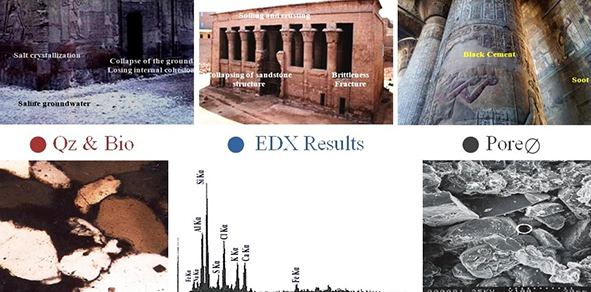The environmental factors affecting the archaeological buildings in Egypt, "II Deterioration by severe human activities"
DOI:
https://doi.org/10.13133/2239-1002/17383Abstract
This paper is the second in a series that addresses the environmental factors affecting the archaeological buildings in Egypt. It presents the results of scientific studies and examinations carried out on one of the most severe deterioration factors affecting the monumental buildings in a crowded and populated environment (Esna Temple). This temple was built during the reign of Ptolemy V (205-180 BC) to memorialize the god Khnum “the holy local god” using Nubian sandstone. In order to understand the effects of a populated environment on this material, samples of sandstone from the temple were examined using some analytical techniques, i.e., XRF, XRD, AAS, PL, and SEM. The results revealed that the temple’s constituents include quartz as an essential component of sandstone, whereas the resulting weathering products are halite, anhydrite, niter, sylvite, and kaolinite. They resulted from numerous deterioration factors and relevant mechanisms because of human activities, including aggressive effects of ground and domestic wastewater, as well as deliberate and undeliberate damage. Moreover, vandalism, theft, looting, improper conservation, and other extrinsic and intrinsic factors, especially the alternative cycles between drying and wetting play a role in deterioration.

Downloads
Published
Issue
Section
License
Copyright (c) 2021 Periodico di Mineralogia

This work is licensed under a Creative Commons Attribution 4.0 International License.

